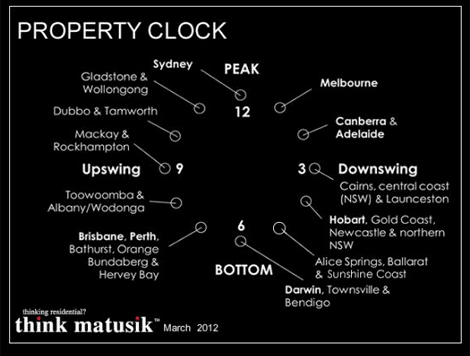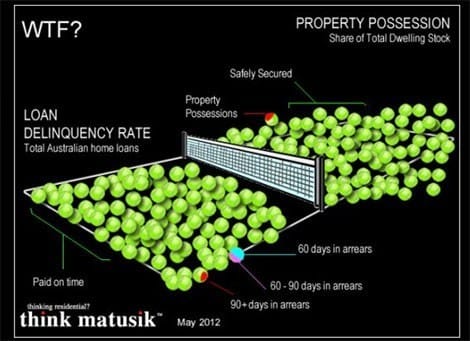Interest rate cut will encourage property investors, not owner-occupiers
Interest rates plummet! Rates slashed! Well, this assumes that most of the official cut is passed on. A 0.5-percentage-point cut in the cash rate really indicates two things – the economy is indeed a lot more sluggish that the RBA predicted and that the banks will only pass on some of the drop, not all of it.
Falling interest rates are unlikely to have much impact on the overall residential market.
But where a 0.5 percentage point fall in the cash rate will have some impact is with those investors who have been content to leave their money in the bank (or in cash in their super funds). They now face some choices.
Gross rental yields on well-positioned and well-credentialed new investment properties are often over 5%. These returns have now become much more attractive and are on top of potential rental growth plus possible increases in capital values in coming years.
The vacancy rate across urban Australia is 1.7% and as low as 1.5% in Brisbane. The vacancy rate is just 0.8% in Canberra, 0.6% in Darwin and 0.5% in Perth.
The ABS house price figures – out earlier this week – show that while residential values across the country continue to slide (down 1.1% during the March quarter), they are starting to rise in Darwin (up 4.4%); in Canberra (1.2%); in Perth (up 1.1%) and in Brisbane (0.4%).
There is no accident regarding the correlation between the last two paragraphs.
This residential property cycle will be driven by investors and investment property. The owner-resident market – and especially those trading older second-hand stock – will struggle to find a half-decent upturn this time around.
Astute investors are already trolling for bargains. The 50-basis-point cut will bring more investors into the market. But they will be savvy. They won’t buy anything. They will take their time.
But the right new stock – with the right price tag/returns – will sell.
Brisbane is Australia’s third largest city and is the Queensland state capital and key business and financial centre for the state. Queensland (2.4%) and Western Australia (2.8%) are Australia’s two fastest-growing Australian states, with GDP growth well above the national average of 1.9%.
In a recent Jones Lang LaSalle report – A New World of Cities – Brisbane and Perth were identified as two of the fastest-growing cities in the world in terms of GDP. Brisbane tops the list of the world’s 20 fastest growing new cities in terms of GDP, with Perth ranked seventh.
The mining boom in coal and gas principally drives Queensland’s growth. The Queensland Resources Council estimates there are $165 billion worth of resource projects in Queensland under consideration, committed or under construction. This investment is a major stimulus to white-collar employment growth in Brisbane.
Jones Lang LaSalle estimates that resource-related demand, including service companies such as engineers, would warrant the building of five to 10 new office buildings of about 64,000 square metres in the next 10 years for the Brisbane CBD and fringe. Savills have made similar predictions. It estimates that direct mining-related employment would require between 52,000 and 80,000 square metres of CBD office space by 2020.
White-collar employment growth in Brisbane will drive new dwelling demand from professional and executive singles and couples.
Brisbane’s resident population has been increasing by around 15,000 per annum, according to the most recent growth statistics. This growth is expected to continue.

Brisbane is at the bottom of the residential cycle. The capital has been through some shite in recent years, but now is its time to shine. The recent state and local government landslide victories will further help this recovery.
Viva la Brisbane!
Click to enlargeGiven the recent hysterical media coverage about home loan delinquencies and property repossessions, one would think that most Aussies were being tossed out on the street. Those nasty banks! Filthy bastards.
But wait a minute, even if the figures most often used to measure delinquency and repossessions were correct (they aren’t, by the way), on average just 1.6% of securitised home loans are in arrears (delinquency), and just 0.6% are three or more months behind, and a paltry 0.15% of residential property across the country is being repossessed by the banks. So what is all the fuss about? WTF is an appropriate response. This chart illustrates the extent of the problem very clearly.
And if only the damn figures were right to start with.
The Fitch report – which is the usual media source for all of this nonsense – states that Australian home loan delinquencies had risen over the last six months, while the RBA’s Financial Stability Review finds quite the opposite.
The difference between the two reports is explained by what they cover. The RBA’s analysis includes all home loans on bank balance-sheets plus securitised loans: more than $1.2 trillion worth in total. In contrast, Fitch’s research only covers securitised loans, which amount to less than $100 billion. To be clear, these loans are included in the RBA’s sample, but represent less than 10% of the total.
The RBA concludes that total home loan arrears in Australia declined. The arrears rate for housing loans (on banks’ domestic books plus securitised housing loans) declined to 0.6% in December, from 0.7% in mid-2011.
The same downward trend applies to property repossessions. In fact, Australian borrowers are repaying their home loans more quickly than what is actually required by their lenders. The RBA’s research reveals that these so-called “excess repayments” increased significantly over the course of 2011, which implies that household stress was on the decline.
The 0.5-percentage-point drop on Tuesday will further accelerate this trend!
Michael Matusik is the director of independent property advisory Matusik Property Insights. Michael is a 25-year veteran in the industry and his firm has helped over 550 new residential developments come to fruition. Michael has launched a new initiative, called Think Matusik. Think Matusik brings together expert opinion and select property opportunities.

